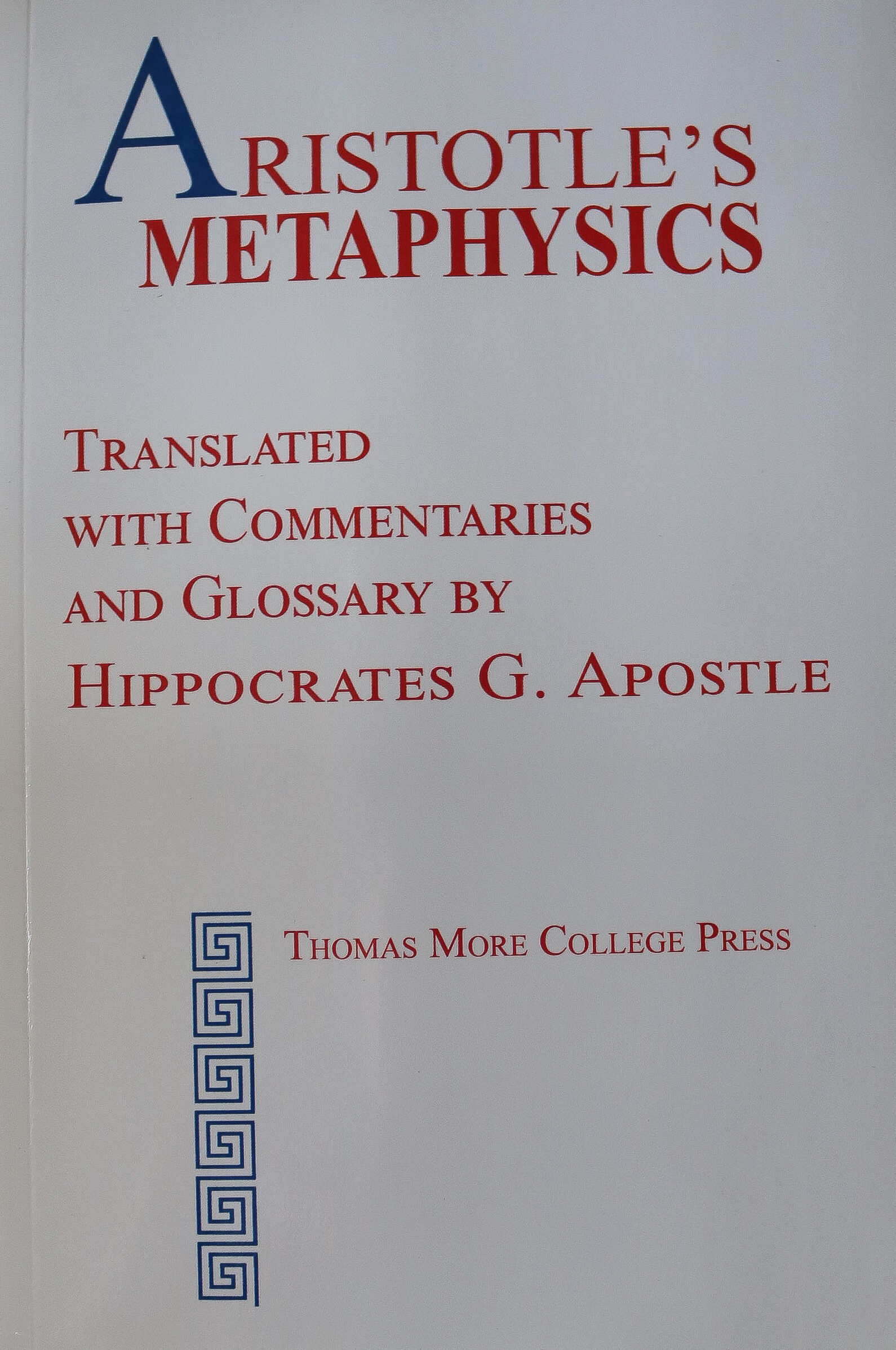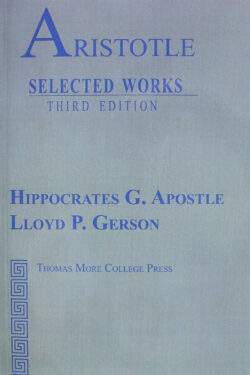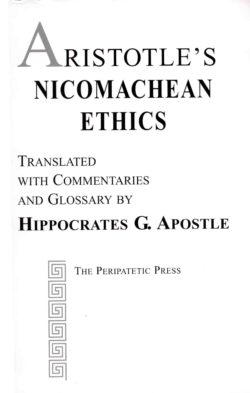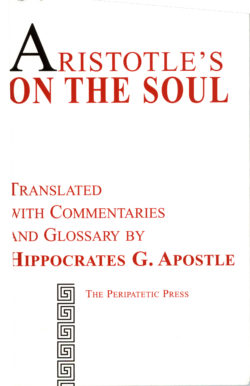Selection from the Preface:
When a great and fertile thinker has much to say in a limited time and without the present speedy means of having it recorded in detail, he chooses, if he has a sense of proportion, a condensed form of expression in order to cover the important points and so state the maximum. Aristotle would seem to have been writing under such circumstances, and, of course, he was writing for mature thinkers. In his works, one notices subjects, predicates, verbs, and important premises are often omitted; and to understand one part of his works one often finds it necessary to have gone through another part, since there is very little repetition. Arguments for or against a thesis are often given by mention of a phrase (like “the third man”) or some other abbreviated expression, whose full meaning is not available to us; and some works which could throw light on the extant works are irretrievably lost. There are many key terms each of which is given many meanings, but since the specific meaning in a given context is usually not indicated, various interpretations may arise.
There is also the claim advanced by some, W. Jaeger for example, that the works we possess of Aristotle indicate a development in his thought, and this would imply a certain amount of inconsistency. If we add to this some deviation or corruption in the Greek texts handed down to us, and also some expected inconsistency, in terminology and thought, in any thinker who attempts to give a comprehensive and detailed account of the various fields of knowledge, the problems of translating the thought through the text become even more acute. In fact, some have gone so far as to say that certain parts attributed to Aristotle are notes taken down by students or that they are spurious works.
Our aim is to translate Aristotle’s thought into English as accurately as possible under the circumstances. The difficulties indicated above can be minimized by adherence to certain principles of translation, some of which are concerned with terminology and others with thought. The translation must correspond to the Greek text as far as possible, and this requires a terminology which is consistent, adequate, familiar, and clear. The text is highly condensed, and to bring out the thought, whether inductively or by proof or in some other way, commentaries are required and references to the other works are advisable whenever possible. Since bringing out the thought is of primary importance within the limits of one volume, historical, philological, grammatical, and other such considerations, and also a discussion of other commentators, will be reduced to a minimum. We shall translate the Metaphysics first, for it is by nature prior to the other sciences and its principles are assumed by the other sciences. Then Physics will follow, and the others, as time allows.
Something should be said about the principles of translation.
(1) The terms should be consistent, for the first aim of these translations is knowledge and not something else, such as a work of art or a display of erudition. If in some cases synonyms should be used for linguistic propriety, they should be listed.
(2) The terms should be adequate. Consistency does not imply adequacy. One English term may be used consistently for a number of Greek terms differing in meaning, as in the case of “knowledge,” but such simplification destroys important distinctions and so clouds or misleads thought. The unnecessary use of English synonyms, it may be added, does not contribute to adequacy and should be avoided.
(3) The terms should be familiar, that is, commonly used and with their usual meanings. If such terms are available, the use of strange terms, whether in English or in some other language, adds nothing scientific to the translation but unnecessarily strains the reader’s thought and often clouds or misleads it. For example, the term ποιότψ should be translated as “quality” and not as “quale,” and the expression τό μόρων Tr/ς ψυχτ/ϊ as “the part of the soul” and not as “the departmental power of the soul”; “Concerning Youth and Old Age” is a better title than “De Iuventute et Senectute,” and expressions like “hypate,” “eo ipso,” “terminus ad quern,” and “ceteris paribus” should be avoided.
(4) The terms should be clear. Clarity is aided by definition, by the use of analogy or example or induction, or in some other way. When one is aware of distinctions for which no different terms exist, he should introduce new terms or use existing terms but indicate the various meanings of each. Aristotle chose the latter way, and a commentary indicating the meaning intended in a context is often advisable for the sake of the student. To beginners, for example, the specific meaning intended by “prior” or “cause” or “substance” is not always clear.
(5) Commentaries are time-saving and instructive. Premises needed to make the conclusion evident are not always mentioned in the text; many of them are distributed throughout the existing works, and others are not available at all, for some of the works are lost.
(6) The translation should be definite in meaning; if cloudy, aside from its uselessness, it may not even be subject to correction.
The above principles of translation are sufficient for the present, though subsidiary ones might be added. The key philosophical and other important terms, along with the definitions of most of them or references, appear in the Glossary. The Commentaries are restricted mainly to details; occasionally they contain alternatives to the given translation, whenever these appear to have some plausibility. Aside from the Summary for each Book, no systematic attempt has been made to give, as St. Thomas Aquinas did, a detailed organization of each Book and Section.
The success of a translation depends, of course, largely on the extent to which the translator understands the thought, especially in the case of Aristotle’s works, which, though condensed and difficult, are fortunately highly consistent.
We have tried to adhere to the above principles so far as practicable. Along with these, we have adopted the following conventions for the sake of clarity…



